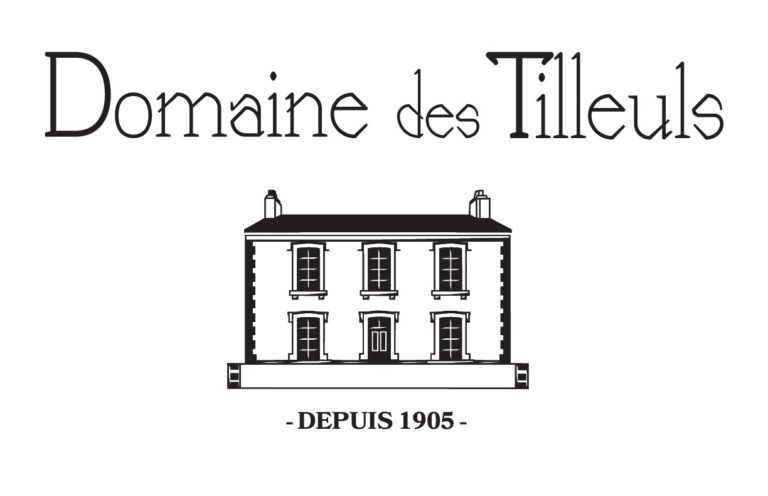TERROIR & KNOW-HOW
As essential and admirable it is, a terroir cannot fully express itself without the skill of the winemaker. At Domaine des Tilleuls, our recognized know-how is implemented whatever the level of appellation to express the best. Our vineyard, made up of several distinct plots, is ideally planted on a terroir culminating at 90 meters on the most surveyed slopes of the region, the specific composition of its soils producing high-quality wines.
Sustainable viticulture
Agriculture Raisonnée
We believe in responsible vine growing methods respectful of the vineyard and its environment. Our aim is to produce environmentally-friendly wines with the utmost respect of our terroir. Thus, our vines are cultivated according to the so-called « sustainable agriculture » standards by adjusting the interventions according to climatic conditions, to the observation and knowledge of the soil throughout the vegetative cycle of the vine.
Preserving our environmental legacy
The entire vineyard is monitored by an approved external body advocating a reduction of chemical treatments allowing the best organic balance brought to the vine while guaranteeing a perfect control of the risks incurred by the grapes throughout its growth as well as to preserve a constant quality of our wines.
At Domaine des Tilleuls, we believe that sustainable viticulture is indeed the very best way of preserving our environmental legacy for future generations.
The Terroir
A terroir between schist and clay
The terroir is a unique combination of soil and climate.
Located about 50 km from the Atlantic Ocean, the Pays Nantais’ vineyard benefits from an Oceanic climate. Winters are relatively mild with temperatures rarely falling below 0°C, while summers are warm and dry, but never too hot. Besides, the vineyard of Nantes, located south of the Loire River, is settled on the Armoricain Massif made up of various volcanic rocks whose there are a dozen different terroir.
At Domaine des Tilleuls, we are situated on siliceous-clay soil that is crossed by a schist vein. Of these two components of the terroir, the soil is the most subtle and the most exciting. The vines draw the moisture they need to grow from between the plates of schist, the roots penetrating down to a depth of some seven or eight metres, where ground water fills the empty spaces and cracks which will give minerality and a certain salinity to our wines. Another major component, the mineral rich clay, allows the soil to heat up slowly in springtime, which causes the vines to bloom early on. The clay’s good water-retention capacity is also very useful in summer. The silica and clay will give tenderness, aromatic complexity and delicacy to our wines.
The geological potential of the plots (exposure, slope, etc.) and the age of the vines also confer a specific personality to each wine, creating diverse and varied cuvées, with an excellent ageing potential.
OUR KNOW-HOW
The Vineyard
It all starts with the pruning period, which takes place from November to March. This is the first vital step in determining the quality of a wine. At Domaine des Tilleuls, we practice single Guyot pruning, which consists in leaving one long fruit cane with ten buds and one or two spurs with one or two eyes each, to obtain a controlled yield in order to optimize and ensure a constant quality of our wines.
Viticulture is very susceptible to the vagaries of climate change, which can affect the quality of an entire harvest. Good weather conditions during the flowering of the vines, in early June, are essential for the proper development of the flower and the future harvest. Maturity and ripeness are fundamental for all of our varieties. This is why we practice topping and tying up, techniques that allow the grapes to reach better concentrations. The grapes start to ripen around August (veraison), at which point they already contain all the characteristics of their terroir and their vintage.
Ageing on the lees
Particular careful attention is taken at each grape harvest, the berries being tasted several times to ensure the very best sugar/acidity balance. This is a crucial step that determines the beginning of the harvest. Depending on the plots, harvesting starts early in the morning to take advantage of the lower temperatures and avoid oxygenation. Some of the grapes are hand picked, notably in our plots of old vines.
The grapes are then brought to the cellar where they are slowly and gently destemmed by pneumatic pressing to avoid oxidation and maceration. The debourbage is done via natural decanting over a period of 12 to 18 hours. The musts obtained are kept cold for a few days before the process of alcoholic fermentation begins. This is done at low temperature for part of our Muscadets, which allows a better extraction of their organoleptic qualities. Malolactic fermentation, performed after alcoholic fermentation, begins in November and ends in December. This technique is mainly used on part of our Chardonnays.
Our wines are then matured on their fine lees, which confers finesse and roundness to each of our cuvées. Of a usual duration of eight months, we also age some of our wines on their lees over a longer period (up to 18 months or more), for wines with greater body and substance, and notably more complex aromas.
